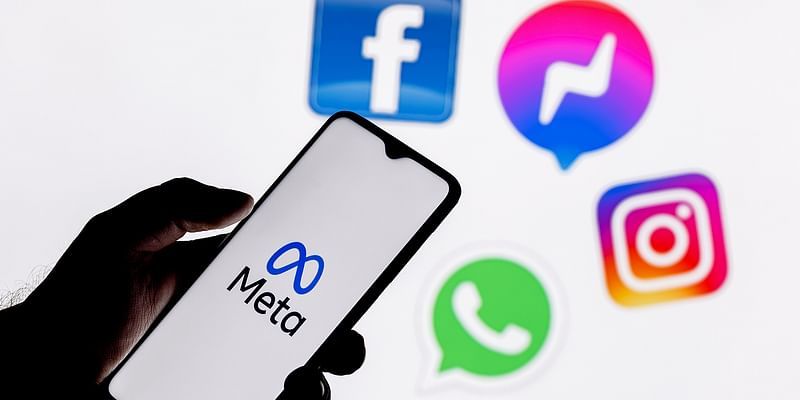parent Meta’s Chief Financial Officer Susan Li said that India has become its largest market for Meta AI usage.
“People have used Meta AI for billions of queries since we first introduced it. We are seeing particularly promising signs on WhatsApp in terms of retention and engagement,” said Li, during the second quarter earnings call.
However, she did not cite any specific usage data pertaining to India.
The social media company launched its artificial intelligence (AI) assistant—Meta AI—in India on WhatsApp, Facebook, Messenger, and Instagram, in June this year.
Meta AI is on track to achieve the company’s goal of becoming the “most used AI assistant” by the end of the year, according to Meta Founder and Chief Executive Officer, Mark Zuckerberg.
Zuckerberg believes that, in the future, every business will have an AI agent for customer interaction, just like it has a website, social media presence, and an email address.
Meanwhile, Zuckerberg pointed out that Threads—the social media firm’s newest platform—is about to hit 200 million monthly active users. Threads was launched last year to take on Elon Musk-owned X, formerly Twitter.
Meanwhile, Meta said the community across its family of apps continues to grow. About 3.27 billion people used at least one of its apps daily in June, 7% year over year.
The Facebook and Instagram parent saw a 21.6% growth in its advertising revenue—its main revenue source—which increased to $38.3 billion from $31.5 billion in Q2 FY23. The revenue of the total family of apps touched $38.7 billion; this includes advertising revenue.
Meta reported a surge in both revenue and profit for the second quarter of 2024, marking the second-highest figures in nine quarters, driven by sustained digital ad spending. Its stock rose about 7% during after-hours trading.
The social media company achieved its fourth consecutive quarter of revenue growth exceeding 20%, with Q2 revenue rising 22.1% to $39.1 billion from $32 billion in the same period last year. Its net profit in the quarter rose 73% to $13.5 billion from $7.8 billion in the year-ago period.
“We have seen healthy global advertising demand on our platform. We are delivering ongoing ad performance improvements, which again we feel like is a result of many, many quarters of effort that have accrued and will continue to accrue value to our platform,” Li said.
Li added that, in Q2, Meta observed strong revenue growth across regions and industries, particularly from smaller advertisers, and it expects this trend to continue into Q3.
The firm expects Q3 total revenue to be in the range of $38.5 billion to $41 billion. In the same period last year, revenue stood at $34.1 billion. A midpoint of the forecast, $39.75 billion, would signify a 16.6% year-over-year growth.
Prioritising AI
“The big theme right now is of course AI,” the Meta chief said, speaking about what AI means for Meta’s family of apps and core business, what new AI experiences and opportunities the firm sees, and how AI is shaping its metaverse work.
“Across Facebook and Instagram, advances in AI continue to improve the quality of recommendations and drive engagement,” Zuckerberg noted, adding, “AI is also going to significantly evolve our services for advertisers in some exciting ways.”
Meta has been expanding its Llama family of foundation models, including the first frontier-level open-source model, as well as new and industry-leading small and medium-sized models. Last week, the company released its largest open-source AI model—Llama 3.1 with 405 billion parameters.
“We are going to look back at Llama 3.1 as an inflection point in the industry where open-source AI started to become the industry standard, just like Linux is,” remarked Zuckerberg.
The California-based company is also figuring out the right level of infra capacity to support training more and more advanced models. It has already started to work on Llama 4—which Meta is aiming to be the most advanced in the industry next year, as per the CEO.
“We are planning for the compute clusters and data we’ll need for the next several years. The amount of compute needed to train Llama 4 will likely be almost 10x more than what we used to train Llama 3, and future models will continue to grow beyond that,” Zuckerberg noted.
“It’s hard to predict how this will trend multiple generations out into the future, but at this point, I’d rather risk building capacity before it is needed, rather than too late, given the long lead times for spinning up new infra projects,” he added.
Rising capex
Meta’s capital expenditure for the second quarter was $8.5 billion, driven by investments in servers, data centres, and network infrastructure.
The company expects full-year 2024 capital expenditure to be in the range of $37 billion to $40 billion, updated from its prior outlook of $35 billion to $40 billion.
“While we continue to refine our plans for next year, we currently expect significant capex growth in 2025 as we invest to support our AI research and our product development efforts,” Li explained.
The rising capex trend mirrors other Big Tech firms such as Microsoft and Alphabet. Microsoft plans to increase its infrastructure investments, with FY25 capital expenditures expected to surpass FY24 levels. Similarly, Alphabet anticipates its quarterly capex to remain at or above $12 billion throughout the year to support its technical infrastructure.
AI shaping metaverse
Apart from Meta’s endeavours in AI, another area of long-term focus is the metaverse—an immersive digital realm—where it has been making significant investments ever since 2021 when Facebook rebranded to Meta.
“A few years ago I would have predicted that holographic AR would be possible before smart AI, but now it looks like those technologies will actually be ready in the opposite order,” Zuckerberg said, adding that Meta is well-positioned for that because of the investments in Reality Labs that it has already made.
“Ray-Ban Meta glasses continue to be a bigger hit sooner than we expected, thanks in part to AI,” he noted.
Meta is hosting its annual Connect conference on September 25, where it plans to have lots of updates around its AI and metaverse work.
Reality Labs, which works on virtual reality and augmented reality gadgets and Meta’s metaverse vision, posted $353 million in revenue in Q2, up 28% driven by Quest headset sales. The unit’s operating loss stood at $4.5 billion.
Li said the company continues to expect the unit’s 2024 operating losses to increase year over year due to ongoing product development efforts and investments to further scale its ecosystem.
Reality Labs’ expenses were $4.8 billion, up 21% year over year, driven mainly by higher headcount-related expenses and inventory costs, Li explained.
The social media giant ended the second quarter with 70,799 employees, down 1% from a year ago.
“We continue to be disciplined about where we are allocating new headcount to ensure that it’s really focused on our core company priorities, but we are also working down a prior hiring underrun … I do expect that we will end 2024 with in-seat reported headcount that is meaningfully higher than where we ended 2023,” Li noted.
Meta expects full-year 2024 total expenses to be between $96 billion and $99 billion, unchanged from its prior outlook.










